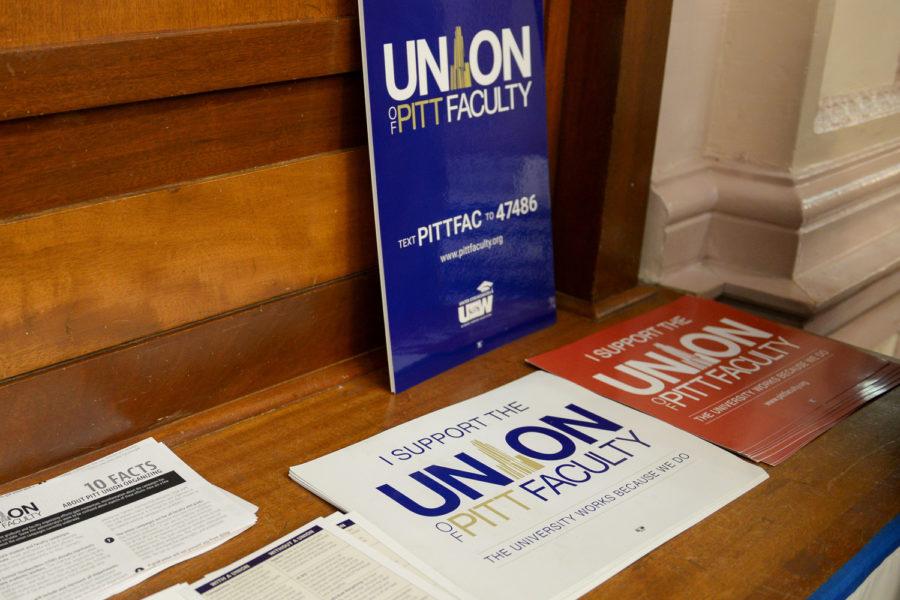PLRB rules on size of potential Pitt faculty union
A Pennsylvania Labor Relations Board official ruled Friday on the size of a potential bargaining unit for Pitt faculty, marking a win for union organizers and moving the campaign further toward an election.
April 19, 2021
A Pennsylvania Labor Relations Board official ruled Friday on the size of a potential bargaining unit for Pitt faculty, marking a win for union organizers and moving the campaign further toward an election.
Stephen Helmerich, a PLRB hearing examiner, listed in his 25-page decision the various groups of faculty members who would be included in the roughly 3,000-member Pitt bargaining unit, but ultimately did not include faculty from the School of Medicine, a point of contention. Union organizers had argued against inclusion, while the University had said the unit should include the School of Medicine.
The faculty union campaign has been at an impasse for two years due to disagreements between union organizers and the University over which faculty would be part of a potential union. Organizers originally claimed in January 2019 that they had met the required 30% threshold of faculty members submitting cards to authorize an election, but the PLRB said several months later that organizers had not met the mark, prompting a legal battle.
A Pitt News investigation found that Pitt had included hundreds of administrators and retired professors on its list of union-eligible faculty, which is used to determine whether the 30% threshold has been met. Helmerich ruled in June 2020 that the Pitt-submitted list was “factually and legally inaccurate.”
Melinda Ciccocioppo, a psychology lecturer, said Friday that “it’s time for the Pitt administration to stop fighting its own workers and allow the democratic process to move forward.”
Pitt spokesperson Kevin Zwick said Friday that “the University has always been clear that unionization is a faculty decision,” and looks forward to working with the PLRB and union organizers to “determine next steps.”
Helmerich said in his ruling that even though faculty from the School of Medicine share an “identifiable community of interest” with other faculty members at the University, he did not include them in the unit. He found that the exclusion would still result in an “appropriate” unit, and would not violate the PLRB’s policy on overfragmentization, or creating too many diffuse bargaining units.
“The risk of overfragmentization is remote because the School of Medicine and its faculty have already been fragmented away from the rest of the school by University policy,” Helmerich said.
He ordered that the University submit an updated list of eligible faculty to the PLRB by May 6 — 20 days after his ruling — which PLRB officials will then use to determine whether the 30% threshold has been met.
Helmerich ultimately ruled that the “appropriate” unit is “a subdivision of the employer unit comprised all full-time and regular part-time tenure-stream and non-tenure-stream faculty and librarians in the Provost Area, health science schools and School of Law, employed by the University of Pittsburgh at all campuses in the commonwealth, and excluding faculty in the School of Medicine, research associates, postdoctoral associates, graduate student employes, non-faculty professionals and all non-professionals, guards, supervisors, managerial and confidential employees as defined in the Public Employe Relations Act.”








